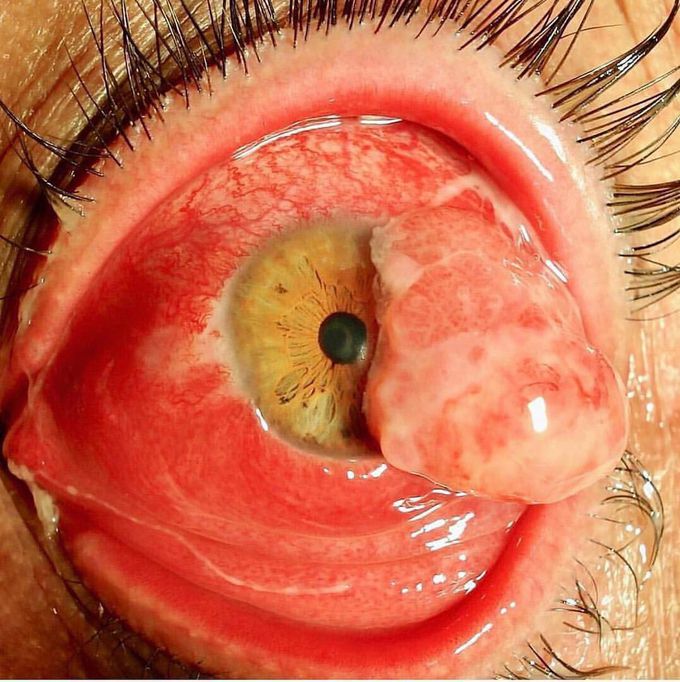


Up close view of a malignant tumor of the eye!
Tumors in the eye usually are secondary tumors caused by cancers that have spread from other parts of the body, especially the breast, lung, bowel or prostate. Two types of primary tumors arise within the eye itself and are known as retinoblastoma in children and melanoma in adults. The image above shows an extensive conjunctival squamous cell carcinoma (SCC) of the left eye. It appears as a white or yellow-pink nodule on the eye surface in the front of the eye where it can easily be seen. Large dilated red blood vessels (referred to as feeder vessels) leading to the tumor on the eye might also be visible. In SCC the abnormal cells extend through the basement membrane into the conjunctival stroma, whereas in intraepithelial neoplasia (another common epithelial tumor) the malignant cells are confined to the surface epithelium. SCC has the potential to penetrate the corneoscleral lamella into the anterior chamber of the eye or can breach the orbital septum to invade or metastasize to the soft tissues of the orbit, sinuses, and the brain. Red eye, photophobia, irritation, foreign body sensation and a white, painless, progressive growth on the surface of the eye are common presenting symptoms. Surgical excision under the microscope with or without cryotherapy remains the widely accepted treatment strategy.

